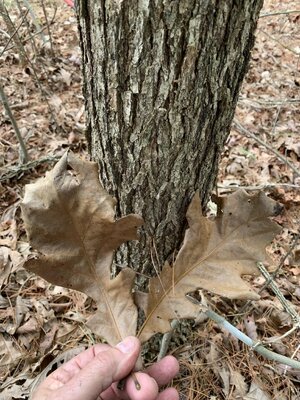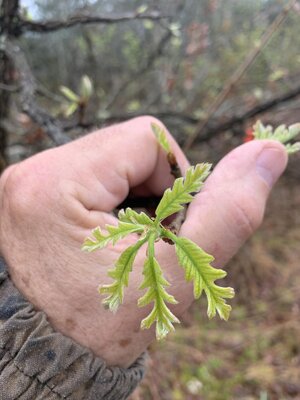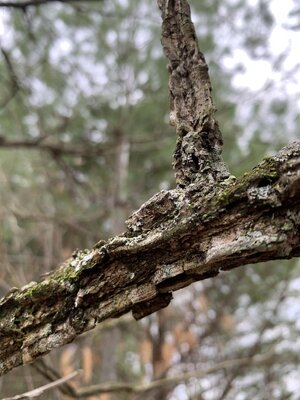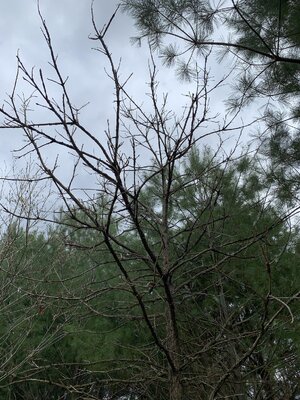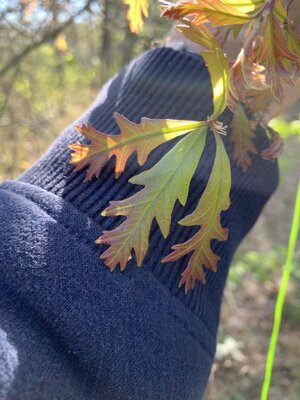Interesting subject. I think your on the right track waiting for the leaves and a lot of the time, IMO, they tell the tale of the tape. Bark, tree structure, and if you get lucky, the acorns, are further indicators. I've been growing oaks since I was 14, and I am now 65, so, 50 years give or take. Varieties are 2 different reds, bimunder, burgamble, DCO, SWO, chinkopin, white. About 20-25 years ago, I bought my favorite, 5 burgamble, from a nursery. 2 of them started producing at about 12-14 feet high, about 7 years ago, and I have grown somewhere between 50 and 100 of them. I have only gotten one tree that looks like a true burgamble parent tree! All of the rest of them do not have a leaf structure that looks like the parent at all. Granted, they are hybrids to begin with, so it is hard to tell what the results will be. I wonder about different varieties. Do they self pollinate? Do they have a tendency to grow true to form regardless of the pollinator?
I found a chinkopin in my neighborhood. I grew 30 or so. There are no other chinkopins around. 50% looked like chinkopins and 50% did not.
I grew 50 or so bimundor from acorns that I found on a tree at a funeral home. There are no other bimundors around. They all are bimundor.
It's like a box of chocolates.
Enjoy your posts. Thanks..
P.S. - i have not read any books or found anything specifically related to tree identification other than random information and pictures and descriptions on the internet and from all the nurseries selling trees. Being located in Michigan, I like this one -
https://ohiodnr.gov/wps/portal/gov/...lants-trees/broad-leaf-trees/broad-leaf-trees


